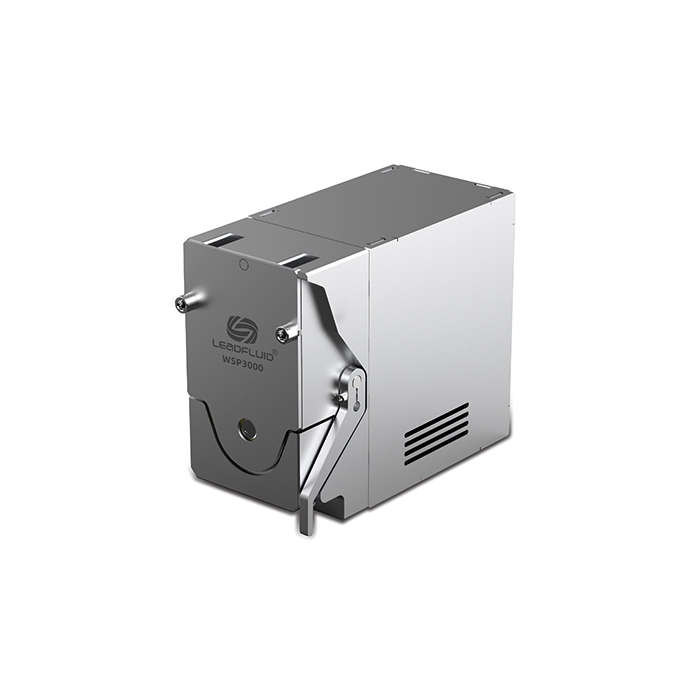The technical analysis of SFA, CFA, SCFA, commonly used in water treatment, environmental protection industry and tobacco, beer, tap water, and water quality automatic monitoring stations. Flow injection analysis is used many times in environmental monitoring. Because flow injection analysis can transmit discontinuous samples through a peristaltic pump for fast and accurate measurement, and can be linked with a variety of detectors, it can be said to be a more commonly used method in environmental monitoring.
Flow injection analysis is a kind of rapid analysis technology of wet chemical method, and the analysis rate can reach 1200 times/hour. The instruments all consist of four parts: injector, chemical reaction unit, detector and computer. It is through the injection valve, the sample solution is injected into a non-interrupted continuous flow often called the carrier liquid, delivered by the peristaltic pump. It flows through the analytical line and is properly chemically and physically “processed” before entering the detector where the analyte can be measured. This is a new method of automatic or semi-automatic analysis, as shown in the figure below a simple process diagram.
The operation method of flow injection analysis is to connect the pipeline between the peristaltic pump, the injection valve and the flow detector usually using a PTFE tube with an inner diameter of less than 1mm, and then install the required devices or equipment, such as dialysis equipment, extraction devices, packed columns, mixing chambers, etc. Next, adjust the speed of the peristaltic pump to make the carrier current reach the required flow rate, and then start the detector.
Use Cases of Flow Injection Analysis in Environmental Monitoring
- Determination of COD
For industrial wastewater analysis, the analysis frequency is 7-20 times/hour. Mainly use two-way carrier liquids containing silver salts of sulfuric acid and potassium permanganate. First, inject 20 microliters of water into the sulfuric acid carrier, then fuse with potassium permanganate, then enter the boiling water reaction chamber, and flow into the colorimetric cell after reacting through the mixing pipeline. It is sufficient to measure at a wavelength of 525 nm.
2. Analysis of Cyanide
This analysis was performed using an amperometric flow detector with silver wire as the electrode, and a flow injection analysis method for free cyanide and complex cyanide was established by means of a continuous isothermal distillation technique. The linear range exceeds six orders of magnitude, and the frequency exceeds 100 times/hour.
3. Determination of Arsenic
As(V) was reduced to As(III) using hydrazine sulfate, excess hydrazine was removed by using a small cation exchange column, and amperometric detection was performed using a platinum wire flow-through electrode. Flow injection analytical amperometry has a sensitivity of 0.4 ppbAS(III), a linear range of three orders of magnitude, and an analysis frequency of approximately 20 times/hour.
4. Determination of Phenol
This assay is performed by platinum flow-through electrode amperometry, the phenolic flow injection analysis studied, and the water sample does not require pre-concentration with a relative standard deviation of less than 1%. In addition, the method of removing the phenolic polymer film by anode polarization for a short time can maintain the electrode activity.
5. Determination of Ming
For natural water samples and soil analysis. Using the acidic solution of diphenylcarbazide as the carrier, it reacts with Cr(VI) in the water sample to form a deep red-purple complex, which can be measured colorimetrically at a wavelength of 540nm, in the range of 0.1-20ppm, and can analyze 70 per hour sample. The results using flow injection analysis are in agreement with standard flame atomic absorption methods.
6. Determination of fluoride ions
Using fluoride ion selective membrane electrode and flow injection analysis technology, F- of 15ppb in rainwater can be monitored, the detection range is 20-200ppd, the accuracy is 3%, and the analysis frequency is 60 times/hour.
7. Determination of sulfide ions
Using hypochlorous acid to oxidize sulfide to chemiluminesce sensitized fluorescein, 10ppd of sulfur ions can be detected, and the measurement frequency is up to 720 times/hour. Alternatively, a flow injection analysis method using methine blue colorimetry is also available. Its analysis frequency is 20 times/hour, and this method is expected to be used for the analysis of industrial wastewater and air pollutants.
8. Determination of Phosphate
Phosphate molybdenum blue colorimetry can be used to measure phosphate in river water, sea water, tap water and well water. The sensitivity of phosphorus is 0.01ppm, and the frequency of analysis is 30 times/hour.
